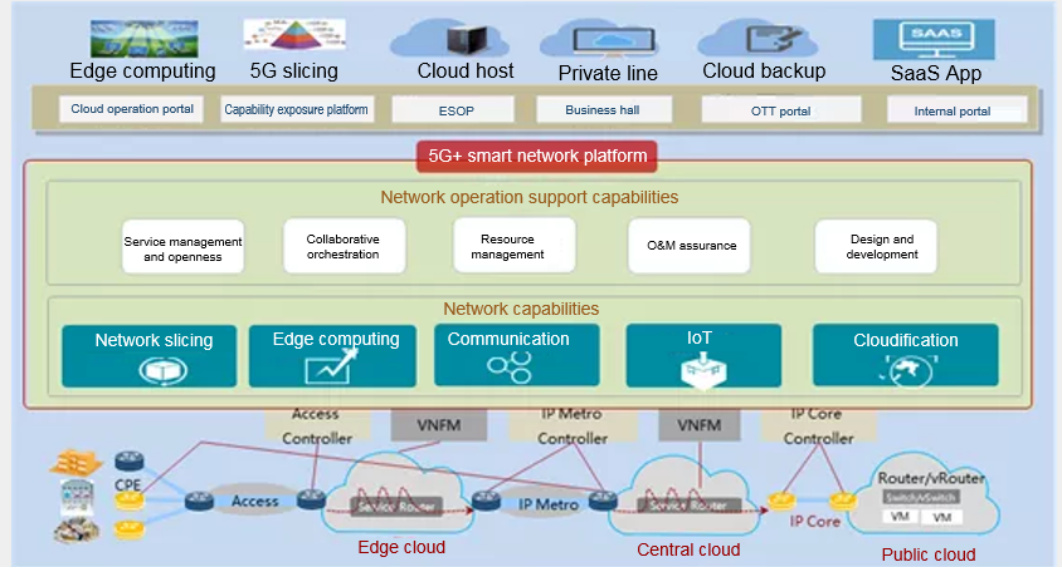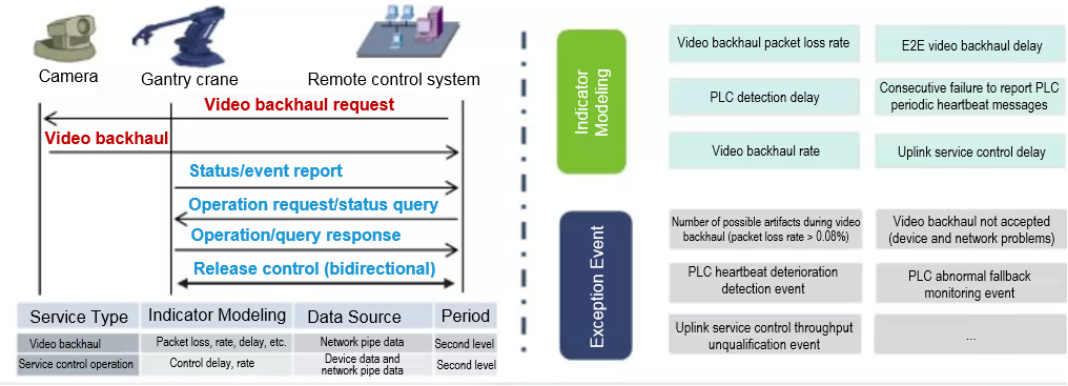Recently, China Mobile Zhejiang Branch (Zhejiang Mobile for short), together with Ningbo Zhoushan Port (Ningbo Port for short) and Huawei, reconstructed the communication network of gantry cranes using 5G SA Network Slicing and MEC at the Meishan Island international container terminal in Ningbo Port. 5G-based remote control of gantry cranes is realized at Ningbo Port with guaranteed SLAs.
This is the first 5G+ smart port project empowered by 5G SA Network Slicing and MEC technologies.
Ningbo Port is one of the world's largest port with an annual cargo throughput of over 1 billion tons for ten consecutive years. It has more than 550 gantry cranes responsible for transshipping 70% of goods in the port area. Workplace conditions for workers driving gantry cranes are poor. Port enterprises urgently need to transform traditional ports that rely heavily on manual operations to automatic ports to improve workplace conditions and efficiency. Driving gantry cranes remotely poses extremely high requirements on transmission delay and network performance to ensure security. It is required that the E2E delay of PLC control signals be less than 18 ms, and 18 channels of HD videos be simultaneously transmitted to the control center, and network performance be stable in the worst-case scenario. Wi-Fi, 4G, and optical fiber networks cannot meet requirements on high-reliability, low-latency, high-upstream capacity, and easy-deployment simultaneously.
Zhejiang Mobile, together with Huawei and other partners, builds the 5G+ smart port solution using the 5G SA Network Slicing and MEC. This solution overcomes technical difficulties, such as ultra-low latency and highly reliable data transmission, and has successfully completed the reconstruction of gantry cranes in Ningbo Port.
Network slicing achieves on-demand resource isolation
E2E Network Slicing is implemented for dedicated resource isolation on the radio, transmission, and core network. Service SLA of the port is guaranteed from the aspects of network reliability, latency, jitter, and security isolation.

Edge computing provides ultra-low service latency
The MEC enables control and video traffic of gantry cranes to be terminated at the network edge. With this technology, the data does not go out of the campus, which greatly reduces network latency and meets customers' requirements for data security.

2B quality management makes key SLAs visible and can be optimized.
The MEC-based lightweight software collection probe was deployed for the first time in China. Data records, AI reasoning algorithms, and stream computing engine are converged at the network edge. In this way, indicators including the E2E latency from the PLC to the control center, are calculated at a fast speed, and exceptions can be accurately detected, building network quality assurance capabilities in 2B port scenarios.

Optimal network enables stable service running.
The remote control system using 5G SA Network Slicing and MEC provided by Zhejiang Mobile has put into commercial use at the Meishan Island international container terminal in Ningbo Port. The average E2E latency is 10.5 ms (shorter than 18 ms required for PLC control signaling), jitter is less than 2 ms, and the average uplink bandwidth is 175 Mbps The network performance enables 18-channel HD video feeds and ensures secure and efficient operation of gantry cranes.

In the future, Zhejiang Mobile will work with Huawei and other partners to continuously explore 5G+ smart ports, continuously carry out innovation in different scenarios, and explore the remote driving of internal container trunks, 5G security surveillance, 5G+ AI smart tally, and unmanned navigation. This will help Ningbo Port transform from automation to intelligence and build a new benchmark for smart ports.


